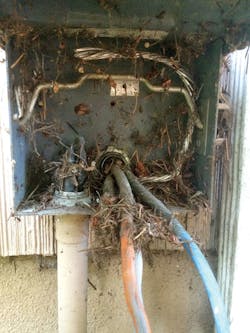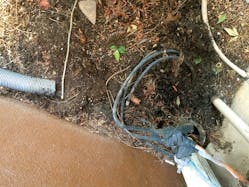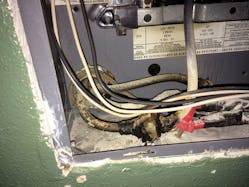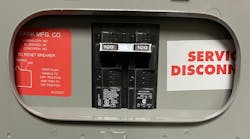At 1:00 p.m. on Dec. 5, 2016, special investigators from the city of Baltimore’s Fire and Housing departments descended on the Bell Foundry with cameras in hand. Since 2006, the two-story brick building, tattooed with spray-paint murals, had been known to many in the Station North neighborhood as a nonprofit work space, gallery, and performance venue for local artists. But thanks to a tip that came in through the city’s 311 hotline, the fire department now had reason to believe that some of those same artists were living there, too, in potentially dangerous conditions.
Four days earlier and across the country, a massive fire had overtaken the Ghost Ship, a decrepit warehouse in Oakland, Calif., where a collective of artists had for years lived illegally — unbeknownst to city officials. Thirty-six people died that night, and though the investigation into the fire’s origin was ongoing as of mid-March, the Bureau of Alcohol, Tobacco and Fire Arms and the Oakland Fire Department had yet to rule out the building’s electrical system, such as it was. Investigators noted that residents had been “borrowing” power from a building next door, and extension cords and exposed wiring snaked throughout the maze of rooms in the 10,000-sq-ft warehouse.
The anonymous tip that alerted Baltimore Fire to the conditions at Bell Foundry didn’t reference the Ghost Ship fire directly, but inspectors didn’t think the timing was a coincidence either. Someone — possibly a former tenant or concerned neighbor — saw in that building the potential for another tragedy. And within minutes of beginning their inspection that December afternoon, Special Investigator Kenneth Jennings and Senior Housing Inspector Derrell Edmond were able to confirm that fear: Exposed wires ran from electrical panels to the ceiling, makeshift light fixtures hung in spaces that seemed to be used for sleeping, and a subpanel in the basement — which appeared to have been converted to a music venue — was overloaded.
On December 7, Baltimore Housing issued a vacant building notice for the Bell Foundry, effectively closing the building and ordering all of its tenants to vacate immediately. To hear Baltimore Housing’s Deputy Assistant Commissioner for Litigation, Katy Byrne, explain it, that notice came not a moment too soon. “The conditions were so bad, we would have closed it regardless of whether the Ghost Ship fire had occurred or not,” she says. “Sometimes in code enforcement you come across situations where you think, ‘How are people still alive here?’”
Living on the edge
As shocking as the fire and loss of life in Oakland may have been to the general public, to those in the electrical inspection and code enforcement disciplines the most surprising part was that a disaster of that magnitude hadn’t happened somewhere sooner. When Mike Stone heard the news last December, he was instantly transported back to his time as a code enforcement officer for the city of Monterey, Calif., specifically the day that he inspected a warehouse much like the Ghost Ship that had been illegally converted to an artist work-live space. “We had to have it vacated,” says Stone, who is now a West Coast Field Representative for NEMA. “There was just no way they could make it work as a residential space.”
What he found there and at many of the other inspections he conducted in central California during his 25 years in code enforcement was not dissimilar from the violations Jennings and Edmond discovered in Bell Foundry and what investigators believe may have contributed to the blaze in Oakland: “You’d see lots of extension cords run all over the place and through the walls,” Stone recalls. “You’d see a lot of open splices. And you’d see overloaded circuits. You have to remember, these spaces weren’t meant for residential use, but people were plugging multiple kitchen appliances into circuits that weren’t designed to handle them.”
These kinds of hazardous installations don’t just show up in large spaces, either. Especially since the Great Recession — as foreclosed homes still sit vacant in depressed neighborhoods and even sloppy renovations spark bidding wars in hot ones — threw the real estate market into chaos. Steve Kass, a senior housing inspector with a residential electrical inspection certification for the City of Portland, sees his fair share of jumped meters and borrowed power in so-called “zombie homes” occupied by squatters. But the shoddy flips are the ones that really stick with him.
In particular, there was the large residential garage he came upon recently, which had been converted into a mother-in-law unit without a permit. Not only had the flipper jammed a water heater, electric heaters, a stove, and a handful of other appliances into a single 60A subpanel — “They needed at least 100A,” Kass says — but they’d also botched the feeder connection. “They took an old hot tub conduit, pulled the wire out, pulled the new feeder through to some point before the subpanel and spliced it,” he says. “But the feeder was too small for the last few feet, and the subpanel was irreparably damaged. It was a mess.”
In the case of the Bell Foundry in Baltimore, Kenneth Jennings and the rest of the special investigation unit didn’t even need to get inside the space to know it was unfit for habitation: They could see the electric meter had been bypassed as soon as they showed up. According to Byrne, it’s a violation they see often, whether in industrial or residential buildings. “We’re a city of row houses,” she says, “so our investigators have stories of people using coat hangers or jumper cables to tie into the meter next door.”
In other words, the issue of illegal electrical installations in makeshift housing spaces is nothing new. And given its clear life-safety implications, it’s one that all involved feel compelled to acknowledge. “It is a concern to the inspection community,” allows Keith Lofland, the director of education for IAEI. But as he points out, it’s a hard phenomenon to get your arms around, at least at the national level. “Not to diminish the problem, but there are so many problems that we’re concerned with,” Lofland says. “Our efforts have been concentrated on representing the inspection community on Code-making panels.” Put another way, he says, “If your foot hurts, do you concentrate on that or your broken arm?”
So the responsibility of addressing makeshift housing falls to each of the thousands of municipalities nationwide. And as the sample of code- compliance departments contacted by EC&M demonstrates, the methods for accomplishing that goal can vary quite a bit.
Enforce and protect
Identifying violations in makeshift housing spaces is one thing, but finding those spaces is another one entirely. Those who live in them have little incentive to bring attention to the situation and risk being put out on the street. And while some spots like the Bell Foundry, with its precarious electric utility connections, can be easily identified from the outside, others manage to fly below the radar.
Then there’s the question of manpower: What city has the budget to staff a code-compliance department large enough to conduct regular inspections of every space that may have been illegally converted to a living space? As a result, cities rely almost exclusively on complaints from the public.
In Baltimore, complaints come in to the fire department through the city’s 311 hotline. From there, authorities determine whether the situation is an emergency (which warrants an immediate response) or a nonemergency (in which case the department will respond within three business days).
In both cases, though, Baltimore Fire partners with the Housing Department, which has a unit of 12 special investigators trained to handle complex code enforcement issues that encompass a wide range of violations. “What they do is very similar to a police investigation, where they document every single thing that could potentially be wrong,” Byrne says. “But instead of looking for crimes, they’re looking for violations under the housing codes.”
Those special investigators do not have electrical certifications, but Byrne is quick to point out that in many cases violations are so egregious — and so numerous — that the housing violation detectives can determine relatively quickly if a space needs to cleared. They also know when to call in reinforcements. “We have a good relationship with Baltimore Gas & Electric [BG&E],” she says, “so whenever our investigators see illegal connections they’re trained to call BG&E right away.”
The city of Denver, on the other hand, has dealt with the issue by assembling a team of code enforcement specialists pulled from the Community Planning & Development department’s pool of trades inspectors. In addition to their daily new construction and renovation inspection responsibilities, two representatives from each discipline — general construction, electrical, plumbing, and mechanical — are on-call to respond to life safety-related complaints.
What makes them specialists? Beyond an intimate knowledge of the National Electrical Code (NEC) and other building codes, they’ve demonstrated an ability to make judgment calls in the field — because no two violations are the same. “Some buildings are older, and some are newer,” says Scott Prisco, Denver building official. “Some were designed for residential use, and some weren’t. Some are full of combustibles, and some are just concrete and steel. So what presents an imminent life-safety issue in one space may not be nearly as serious in another.”
That’s not to say Denver’s code enforcement specialists will turn a blind eye to violations if they’re less likely to cause a problem. But they likely will give the occupants or building owner more time to correct them. “There is an element of compassion necessary in these situations,” Prisco says. And that thinking has even extended to the way inspections are conducted. Where in the past, a space may have been subjected to a cascade of visits from representatives of multiple departments, the specialists now team up to conduct a single inspection.
The protocol for handling makeshift housing is different still in Portland. Building inspectors respond to complaints of dangerous living conditions in industrial spaces, and housing inspectors like Steve Kass handle residential calls. (He’s one of three with an electrical certification.)
But while, like the specialists in Denver, inspectors pull double-duty by reviewing work in both sanctioned and unsanctioned spaces, Kass says his department is shifting toward strictly enforcement-based work. “Just within the last few years we’ve been moving toward a complaint-to-compliance model,” he says. “Basically, all of the permits that arise out of enforcement activity can be inspected by the same inspector. That way we’re not burdening our regular inspection team with these complex enforcement situations. We can take care of them ourselves.”
A shared responsibility
The obvious shortcoming of a strictly complaint-based system is that you only know what the public is willing to tell you. And the obvious solution to that, according to Lofland of IAEI: “Hire more inspectors.” However, he also recognizes that isn’t an option in most municipalities, which have likely contracted in the years since the Great Recession.
Instead, code enforcement departments are doubling down on community involvement. Baltimore’s current mayor, Catherine Pugh, was sworn in on Dec. 6, 2016 — just one day before the Housing Department shut down the Bell Foundry. And Katy Byrne says Pugh’s office convened a task force dedicated to addressing the city’s makeshift housing issues within a week of her inauguration. Since then, the city has held public meetings, stressing the importance of coming forward to report dangerous living conditions.
Byrne also notes that the Housing Department doesn’t wait around for the 311 hotline to ring. Community meetings, casual conversations with community presidents, even good old-fashioned word on the street about a questionable living space can be enough to trigger an inspection. “Once we hear,” she says, “we look.”
Scott Prisco says the Ghost Ship fire hasn’t changed the way things are done in Denver. “This issue has always been high on our radar,” he says. What he’s hoping, though, is that the tragedy will place the issue high on the public’s radar. “I’d like to think that what’s happening — maybe even across the United States — is that neighbors who are concerned for others’ life safety are sending in more complaints. So it’s not that we’ll increase inspections. It’s that we’ll be responding to more folks who are looking out for others.”
Halverson is a contributing writer based in Seattle. He can be reached at [email protected].






